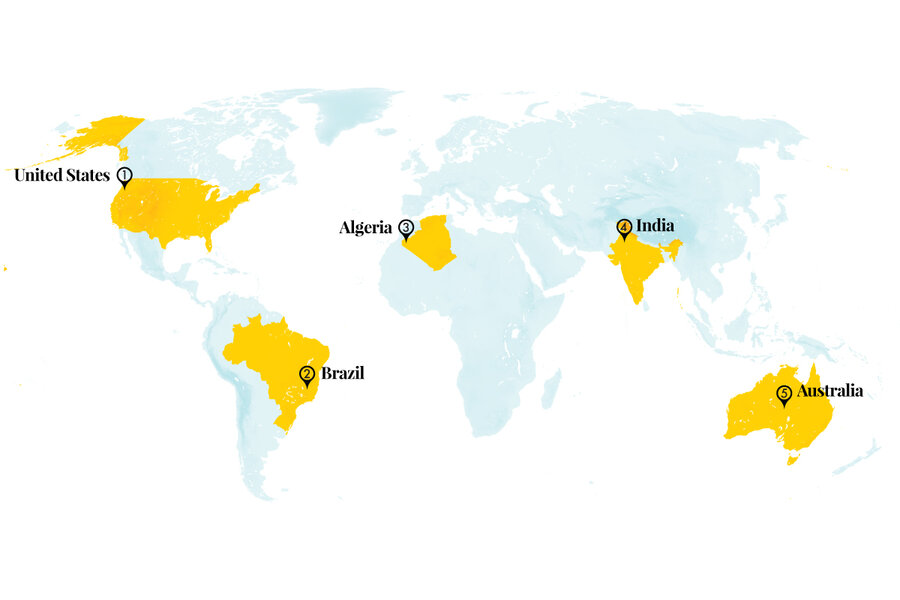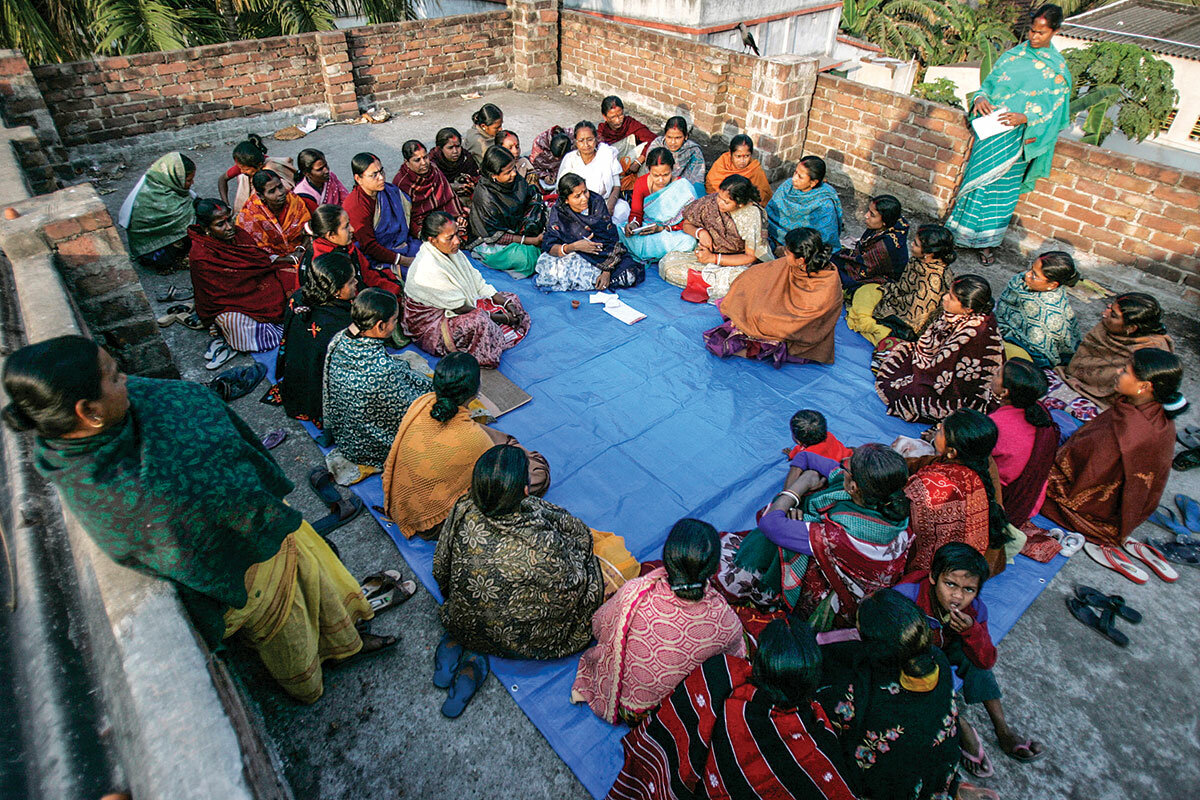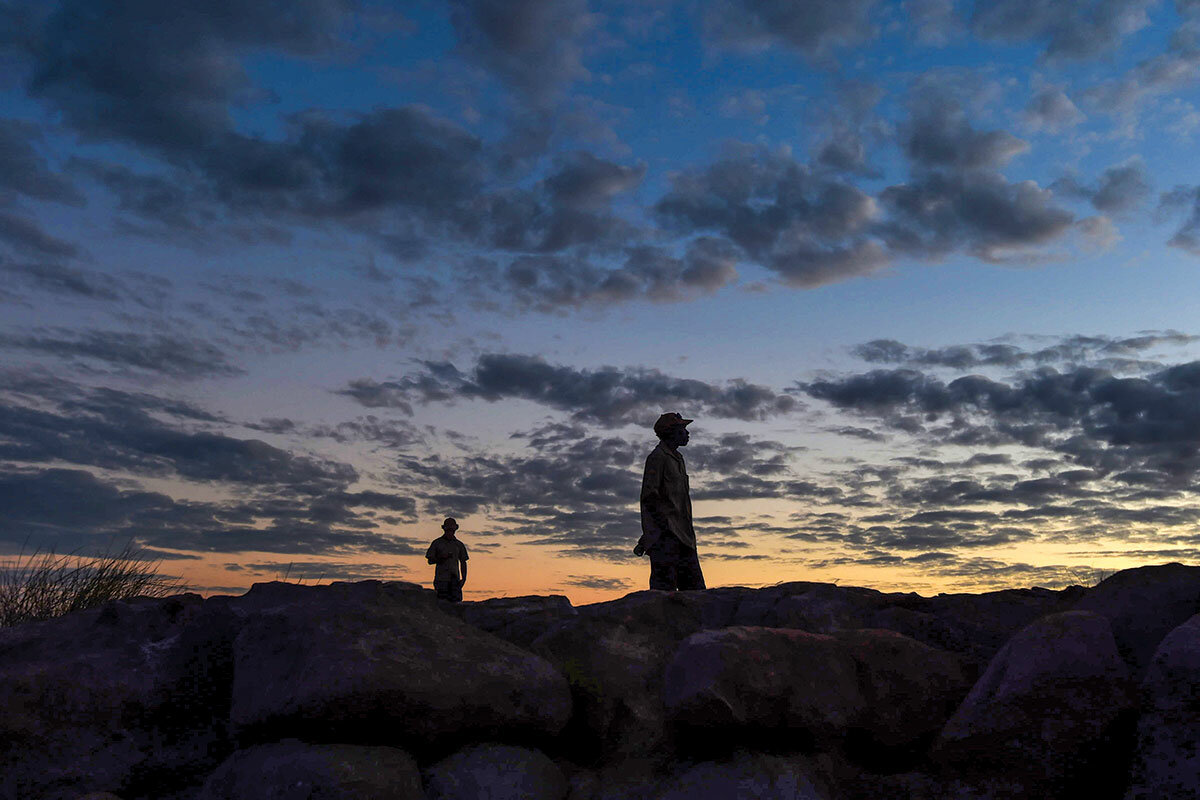Green energy from sewage, and furniture from plastic waste
Loading...
Solutions that address more than one issue at a time are happening on the local and national levels. Beyond Oregon’s Clackamas County sewage plant transformation, note how Australia’s government is funding more environmental protection with job creation for its Indigenous residents.
1. United States
An Oregon treatment plant is converting sewage into clean energy. Wastewater takes large amounts of energy to treat. But Clackamas County addressed the needs of its growing population with a system upgrade that uses human waste to make heat and electricity needed by the plant itself. The Tri-City Water Resource Recovery Facility adopted the sludge-to-energy model in August 2021. The process now heats five buildings on-site and provides half the facility’s electricity.
Why We Wrote This
In our progress roundup, ingenuity and necessity play their parts: An Oregon community has financed a cogeneration water treatment plant for its growing population, and a Dutch nonprofit is helping refugees in Algeria manufacture sellable goods from the plastic littering their camp.
The wastewater is filtered and microbes break down waste to create “activated sludge.” In an anaerobic digester, microorganisms produce methane, which is transformed into heat and electricity with the help of a 600 kW lean-burn co-generation engine. Meanwhile, solids that get filtered out are used to make fertilizer for non-food crops in eastern Oregon. Providing water to 190,000 residents, the project cost the county $35 million, with support from the local public utility.
Reasons to be Cheerful
2. Brazil
Concerned citizens have planted over 2 million trees in southeastern Brazil since 2005. At first, the goal of the Conservador das Águas (Water Conservation) campaign was simple: Protect the water supply for a town of 35,000 in the state of São Paulo by restoring forest cover in watershed areas. By 2016, the efforts expanded into the Mantiqueira Conservation Plan, which has committed to a more ambitious goal of reforesting 1.5 million hectares (3.7 million acres) by 2030 across three states.
To encourage landowner engagement, the conservation plan supports local policymaking and technical training. The group was one of the first adopters of Brazil’s “payment for ecosystem services” model, whereby rural landowners are offered financial incentives to reforest land while also preserving existing forests, pastures, and soil. “If we don’t take care, the water will end in 20 or 30 years. We have to think about the future, our children and grandchildren,” said Helias Alves Cardoso, a landowner who has reforested 4 hectares of his property as part of the conservation project.
Mongabay
3. Algeria
Refugees in Algeria are designing furniture and other products out of plastic waste. Tens of thousands of Sahrawi people have lived in camps on the border between Mauritania, Morocco, and Western Sahara for much of their lives, with high levels of unemployment. So when the United Nations refugee agency called for ideas on tackling waste in the camps, Dutch nonprofit Precious Plastic offered its DIY recycling system as a way to tackle both problems.
The open-source organization supplied the necessary equipment, including machines that shred and clean the plastic before it’s melted and reshaped. “We had a few design sessions where we talked about what’s possible and how to use this plastic material,” said Joseph Klatt, managing director at Precious Plastic. “And then they were just super stoked on coming up with ideas that made sense to them [like] furniture styles that they’re used to.” Refugees who work at the recycling center plan to sell their products, including school desks, benches, chairs, and serving sets for tea, to local nongovernmental organizations. For now, the workers earn a salary from the U.N., but after the first year of operation, they will become partial owners of the facility.
Fast Company
4. India
Excluded from traditional village governance, Indian women are forming their own political assemblies. Village councils – called panchayats – are historically men’s groups. But during the height of the pandemic, more than a dozen women’s sessions took place in northern Indian villages, at first to debate the contentious issue of child marriage, and later expanding into other topics. Each meeting lays the groundwork for a charter of demands, which are submitted to local and state governments.
A recent gathering in the 10,000-person village of Mandkola led to the push for at least one high school for female students in each of the nearby districts. “I do not want my four younger sisters or the girls of this village to face what I currently face,” said Mahabali, a young woman from the village. “My only desire to participate in this program is to work for the betterment of women.”
Reasons to be Cheerful
5. Australia
Australia doubled the number of jobs available through its Indigenous ranger program. The initiative, which centers on Aboriginal land management, helps meet a wide range of “caring for Country” goals, including monitoring illegal fishing, conducting controlled burns, and protecting marine turtles. In its most recent budget, the federal government committed an additional $636 million (Australian; U.S.$460 million) to the program, first formed in 2007. One thousand rangers will be hired and 88 new ranger projects will begin around the country with the new funding, which extends until 2027. Some 800,000 Australians identify as Indigenous, about 3% of the population.
Beyond safeguarding ecosystems, the program places emphasis on economic empowerment for Indigenous communities. “We’re building the wealth of Aboriginal people and that wealth gives people the ability to plan for the future and to have the same choices as non Aboriginal people,” said Gail Reynolds-Adamson, a Nyungar woman from Western Australia, about the program. The federal budget includes separate funds to support Indigenous title holders and extend the Indigenous Home Ownership Program, alongside environmental research and protection.
The Sydney Morning Herald, The Guardian








